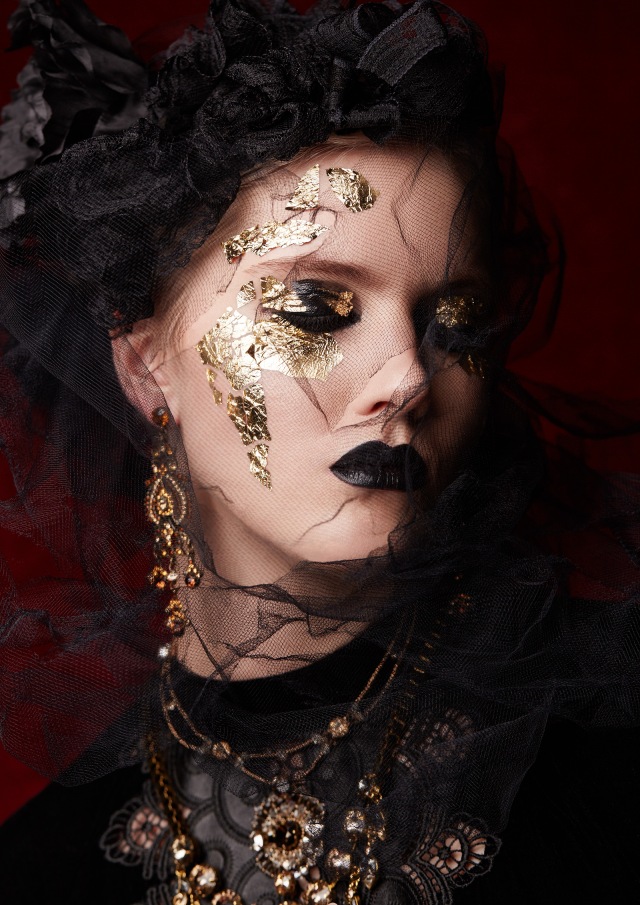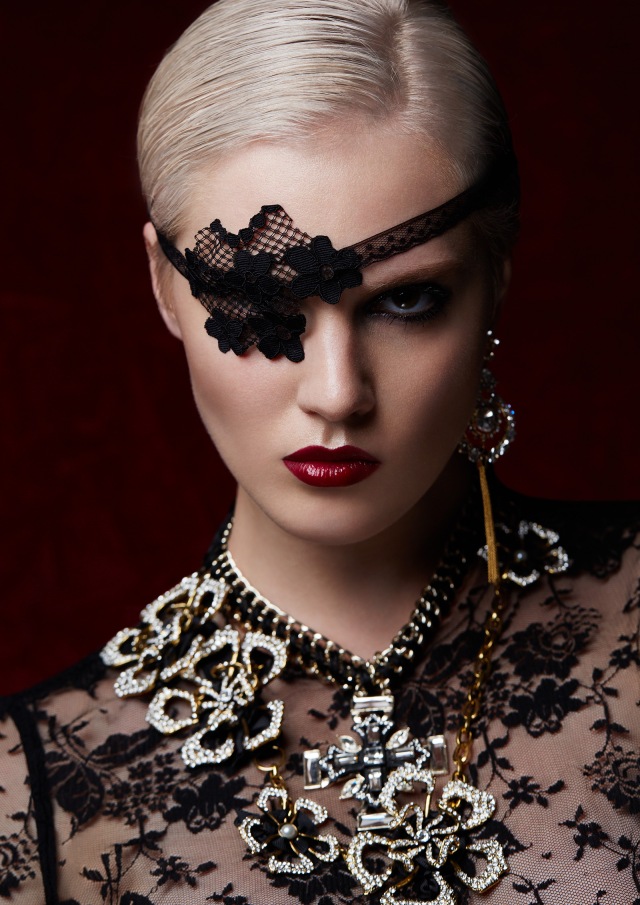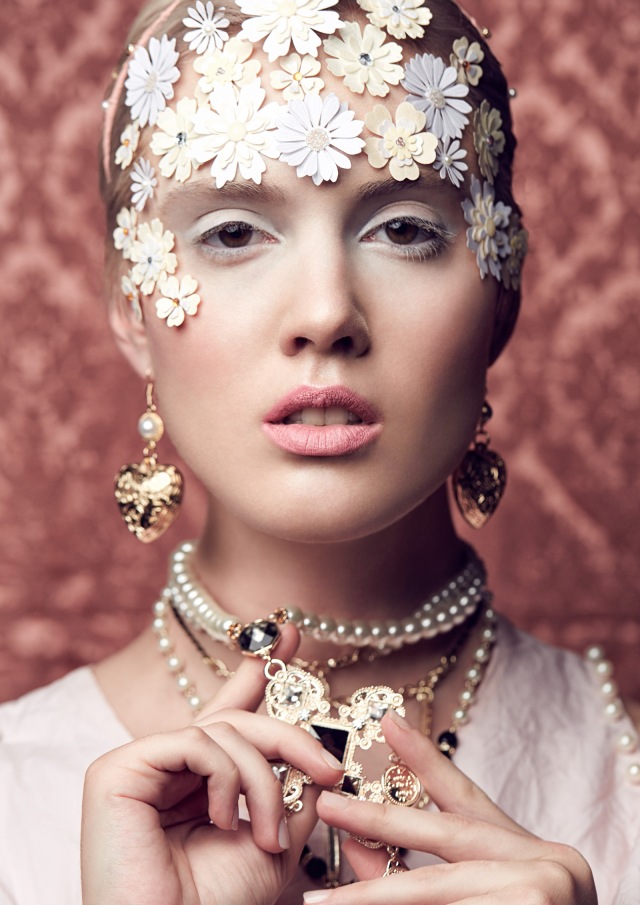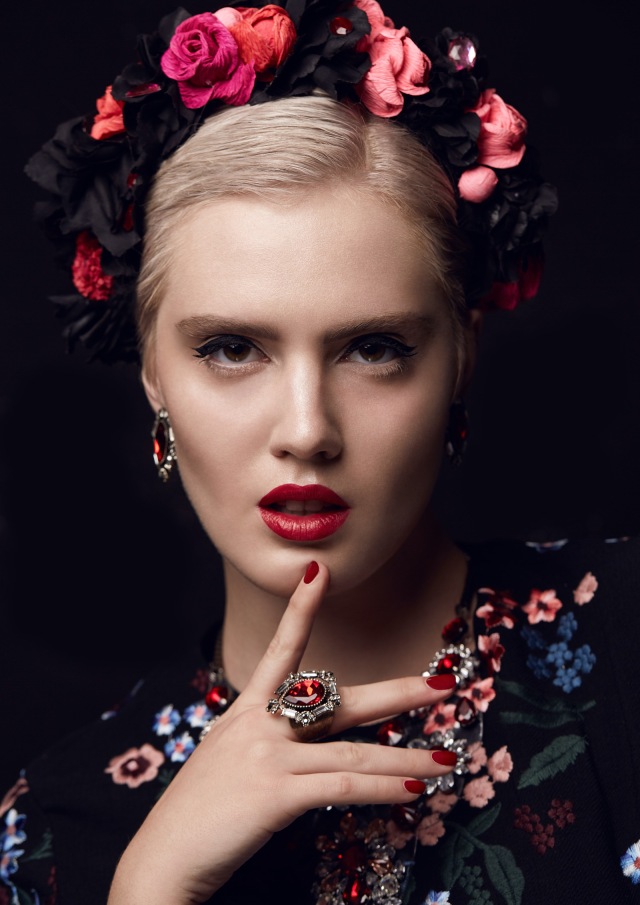BAROQUE
Using word BAROQUE in the modern way, in the context of fashion and makeup, we should realise its importance and forget about the fact that this term to describe historical period lasting from the end of the sixteenth through the seventeenth century, and in some countries the early eighteenth century. Baroque style risen from the Renaissance through the significant enrichment of its form. This was the result of imposing the art of representational function. In most European countries it persisted during the seventeenth century during absolute monarchy, and this resulted in a desire to show their power and wealth.
Baroque style is characterised by the following features:
- wealth and dynamic form,
- ornaments,
- colour and unprecedented material,
- gesture and expression,
- theatricality,
- avoiding straight lines and flat planes,
“New baroque” in the season autumn / winter 2015 is visible both in the selection of very rich fabrics such as velar, velvet, artificial fur, jacquard embroidered floral motifs or patterns, such as the Versailles upholstery and wallpaper. In this season “New baroque” was used by: Dries Van Noten, Louis Vuitton, the Irish designer Simone Rocha, Dolce & Gabbana, Givenchy, Alberta Ferretti, Valentino and Gucci. Next to textiles, baroque manifests itself also through a the richness of costume jewelery and glamor styling. The accumulation of lace, decorative ribbons and other items does not necessarily consistent but giving wealth effect. In makeup, next to various applications glued to the face, a large amount of gold, baroque can be seen especially in colours symbolising power — purple, crimson or deep red wine.
BAROK
Używając współcześnie słowa BAROK w kontekście mody i makijażu, powinniśmy sobie uzmysłowić jego znaczenie i zapomnieć o tym, że terminem tym operujemy także, mówiąc o okresie historycznym trwającym od końca XVI poprzez XVII, a w niektórych krajach do początku XVIII w. Styl barokowy powstał z renesansu poprzez znaczne wzbogacenie formy. Był to wynik narzucenia sztuce funkcji reprezentacyjnej. W większości państw europejskich utrwaliła się w XVII wieku monarchia absolutna, to zaś zaowocowało dążeniem do pokazania swojej potęgi i bogactwa.
Styl barokowy charakteryzuje się następującymi cechami:
- bogactwem i dynamiką formy,
- ornamentyką,
- barwą i niespotykanymi materiałami,
- ekspresją gestu i wyrazu,
- teatralnością,
- unikaniem linii prostych i płaszczyzn płaskich,
“New baroque ” w sezonie jesień/zima 2015 , widoczny jest zarówno w doborze bardzo zdobionych tkanin takich jak: welury, aksamity, sztuczne futra, żakardy haftowane w motywy kwiatowe lub wzory, jak z wersalskich obić i tapet. Ten element barokowości wykorzystali w swoich projektach na ten sezon między innymi:Dries Van Noten, Louis Vuitton, irlandzka projektantka Simone Rocha, Dolce&Gabana, Givenchy, Alberta Ferretti, Gucci czy Valentino. Obok tkaniny, barok przejawia się także poprzez bogactwo sztucznej biżuterii oraz przepych stylizacji. Nagromadzenie koronek, ozdobnych taśm oraz innych elementów niekoniecznie spójnych ale dających efekt bogactwa. W makijażu zaś obok różnorakich aplikacji naklejanych na twarz, dużej ilości złota, barok widać zwłaszcza w kolorach symbolizujących władzę – purpurze, karmazynie czy głębokiej czerwieni wina.




Make up/style – Beata Bojda
Photo – Ivon Volak
Model – Sylvia Sordyl
Jewellery – Lewanowicz
